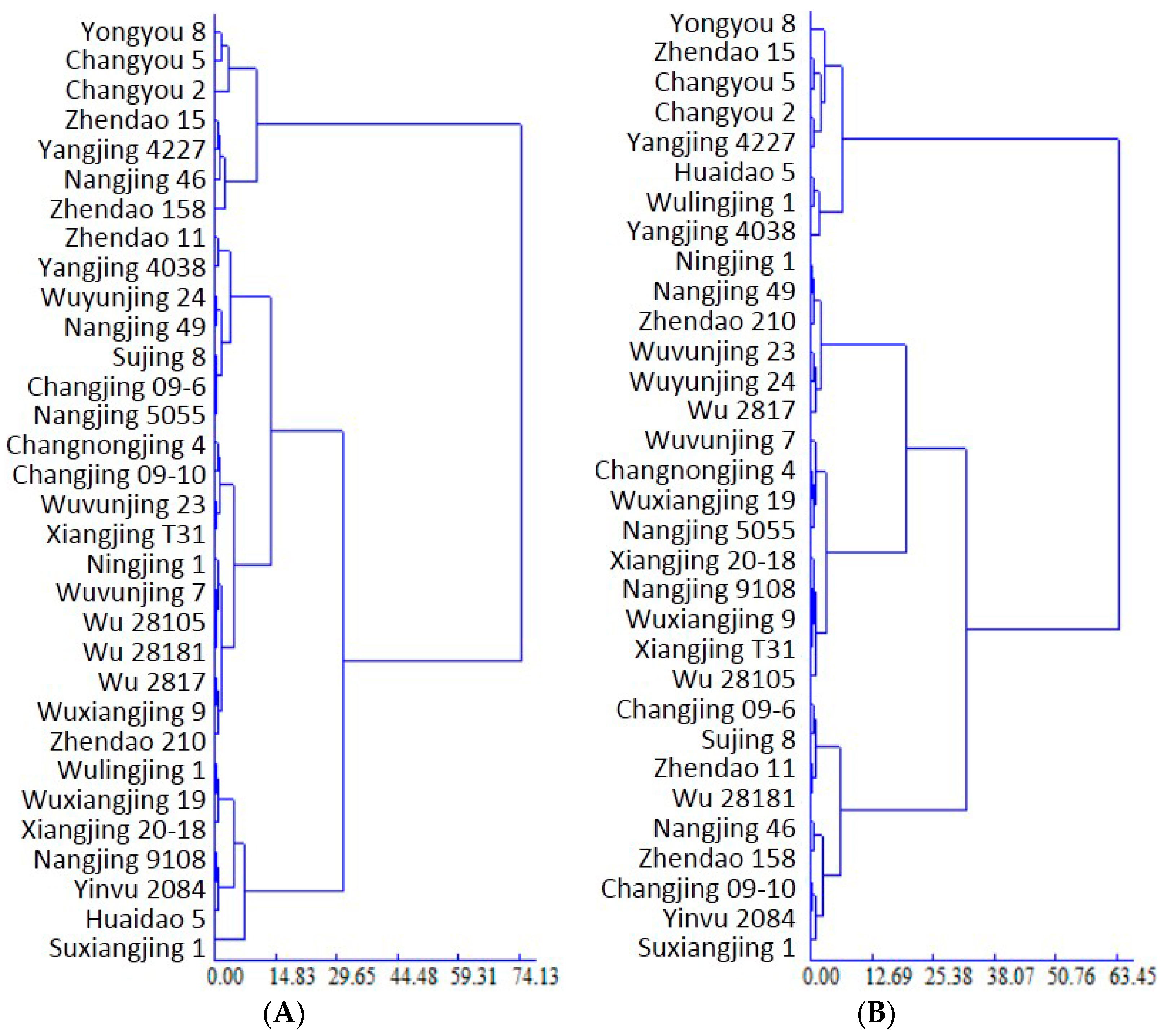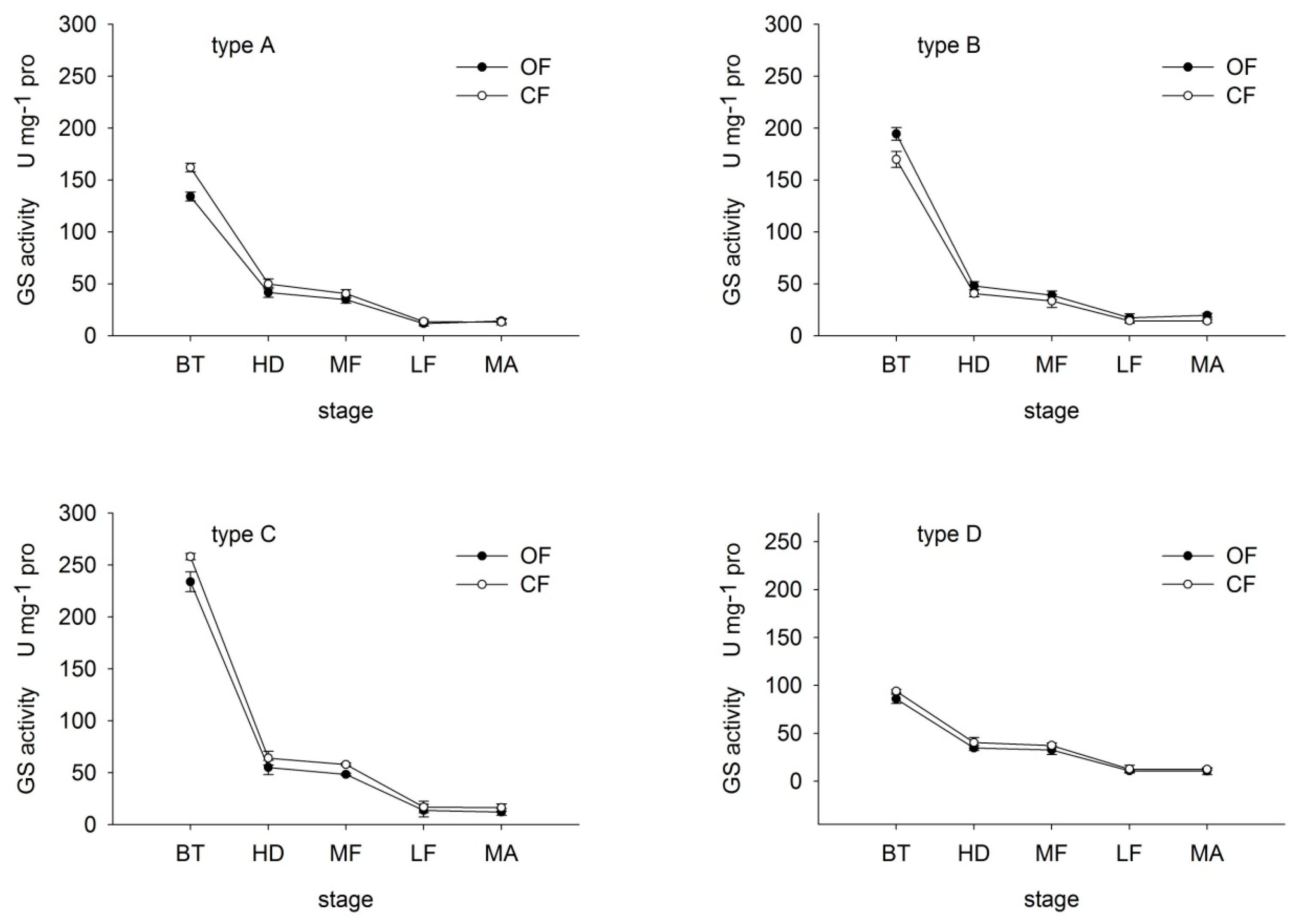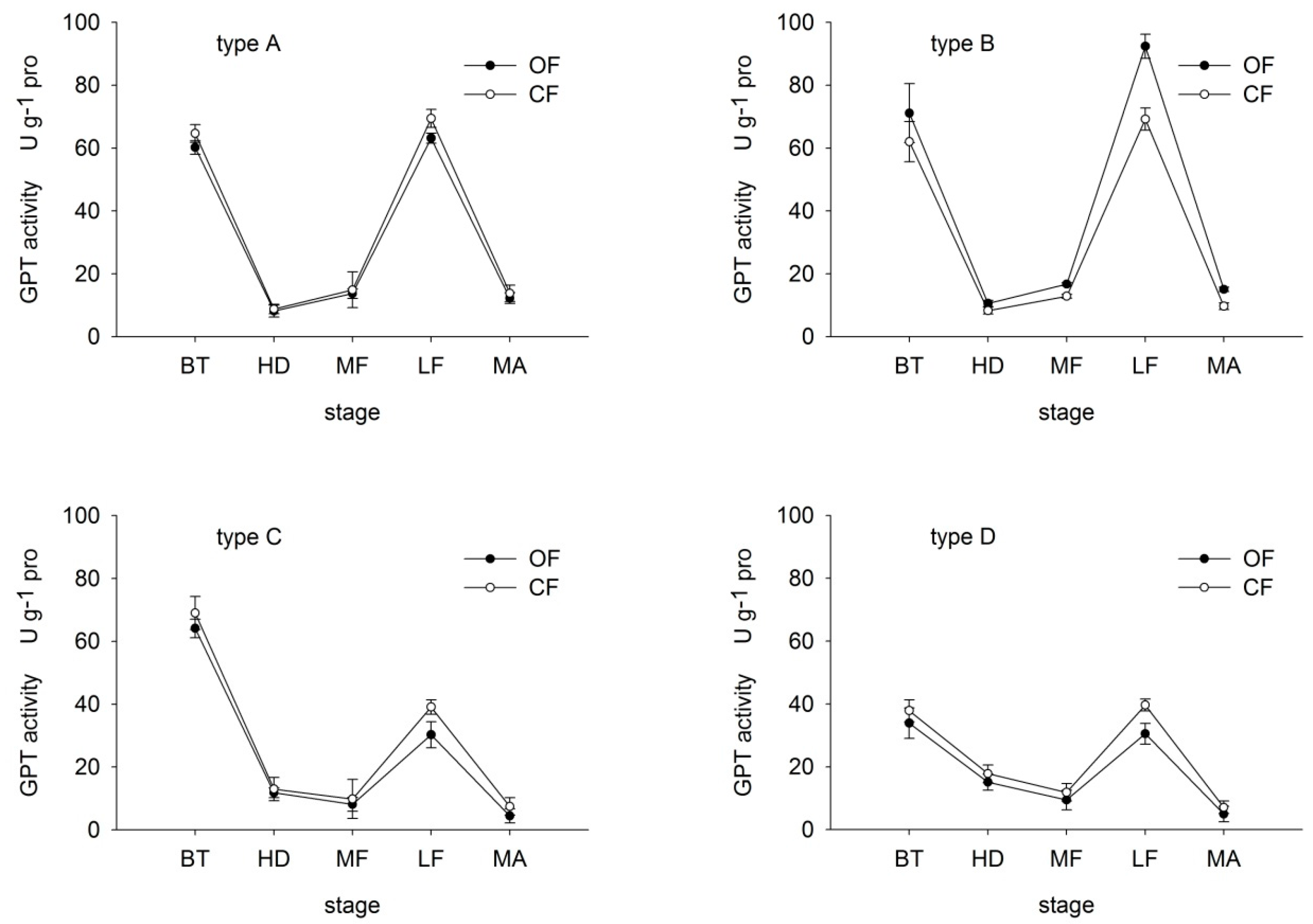1. Introduction
As a consequence of the negative impacts of conventional farming (CF) on the environment and human health [
1,
2], organic agriculture is becoming increasingly widespread. Moreover, due to increasing consumer demand and political support, the popularity of organic food is also on the rise [
3,
4]. According to the United Nations Conference on Trade and Development [
5], the global organic food market has expanded by 10%–15% in the past 10 years, with conventional markets growing by only 2%–4%. In addition to the safety aspects, organic farming is deemed beneficial to the environment and the biodiversity of a wide range of taxa including birds and mammals, invertebrates and arable flora [
6,
7]. In China, organic agriculture and the production of organic products was introduced in 1990 [
8]. Since then, both the international and domestic market for organic products has continued to grow, with experts predicting huge market potential in the future [
9].
During the past three decades, farming practices and management systems have intensified in many rice-producing countries [
10,
11,
12]. Organic rice, as an important organic product, is thought to represent approximately 3 million hm
2 and is becoming increasingly popular [
8]. However, due to its late start, there is a lack of related research and system technology for organic rice production, especially in terms of variety selection and fertilizer management [
13]. Moreover, since nitrogen (N) is among the most important elements in agriculture systems, efficient organic fertilizer application that minimizes negative effects on the environment also needs to be examined. Moll et al. [
14] defined nutrient use efficiency (NUE) as being the yield of grain per unit of available N in the soil (including the residual N present in the soil and the fertilizer). This NUE can be divided into two processes: uptake efficiency (the ability of the plant to remove N from the soil as nitrate and ammonium ions) and utilization efficiency (the ability to use N to produce grain yield) [
15]. Although high amounts of organic fertilizer can maintain or increase rice yield, there is a risk of non-point source N pollution [
16]. Under organic farming (OF), the gradual and continuous application of nutrients differs from that under CF [
17]. Moreover, evaluation of yield and NUE in rice is commonly established on the basis of chemical N fertilizer [
18], not the conditions of OF. Thus, there is an urgent need for research aimed at a thorough understanding of potential varieties that show high yield, quality and NUE under OF.
Nitrogen is usually available to plants in an inorganic form such as nitrate, nitrite or ammonia. Nitrate is a major source of inorganic nitrogen utilized by higher plants [
19]. In
Arabidopsis, the process of nitrate assimilation involves the initial uptake of nitrate ions from the soil, followed by reduction to nitrite and then to ammonia. The reduction reactions are catalyzed by the enzymes nitrate reductase and nitrite reductase, respectively. Ammonium ions enter the amino acid pool primarily by way of the action of glutamine synthetase [
20]. Generally, in higher plants, there are some key N metabolism enzyme involved in assimilating intracellular ammonium into organic compounds, such as GS, GPT, GOT and so on. Glutamine synthetase (GS; EC 6.3.1.2) is a key enzyme for the assimilation of ammonium into glutamine. Numerous studies of the GS enzyme have emphasized the importance of this enzyme in plant nitrogen metabolism [
21]. Leaf glutamic-pyruvic transaminase (GPT) and glutamic-oxaloacetic transaminase (GOT) activities, which in the presence of their co-substrates pyruvate and oxaloacetate, convert
l-Glutamate into α-ketoglutarate, were determined to gain a better understanding of the nitrogen assimilation response [
22]. However, there has been very little study of the influence of organic farming on nitrogen metabolism of rice plants.
In the present study, 32 representative conventional Japonica rice varieties were field-grown under CF and OF in Gaoyou city, Jiangsu Province, East China. The objectives were to screen for genotypes showing high yield and NUE under OF. Subsequently, key enzymes of N metabolism were investigated to determine the biochemical mechanism underlying effective N utilization in OF. The results provide a scientific basis for organic rice cultivation and nutrient management.
2. Materials and Methods
2.1. Plant Materials and Growth Conditions
Thirty-two representative
Japonica rice varieties, commonly field-grown in the middle and lower reaches of Yangtze district, were selected (
Table 1) and grown by organic farming and conventional farming during the rice growing season (from May to October) of 2013–2014. Two experiments were carried out, one in 2013 and a second one in 2014. In 2013, 32 varieties were screened under CK, CF and OF (including three different dosage of organic fertilizer) (
Table 1 and
Table 2). In 2014, we repeated the same experiment as 2013, eight rice varieties with synergy and transition of REN were chosen for thorough analysis under CF and medium dosage of OF.
Experiments were carried out on an eco-agricultural farm in Gaoyou county, Jiangsu Province, China (32°47′ N, 119°25′ E, 2.1 m altitude). In the farm, half of the planting area had been verified by the China Organic Food Certification Center in 2009, where the organic farming of rice was produced. Conventional farming was carried on the other part of the farm. The farm was under continuous cultivation with green manure (Astragalus sinicus L.)-rice rotation. During the study period of 2013 and 2014, the study site experienced annual mean precipitation of 968 mm and 992 mm, annual mean evaporation of 1118 mm and 1082 mm, an annual mean temperature of 15.0 °C and 14.8 °C, annual total sunshine hours of 2124 h and 2076 h, and a frostless period of 223 day and 217 day, respectively. The soil on the farm is clay with 22.4 g·kg−1 organic matter, 80.8 mg·kg−1 alkali hydrolysable N, 23.3 mg·kg−1 Olsen-P, 105.3 mg·kg−1 exchangeable K, and 1.03 g·kg−1 total N. In both years, seedlings were sown in a seedbed on May 1st then transplanted on 20 May at a hill spacing of 0.30 × 0.15 m with three seedlings per hill.
2.2. Treatments
The study was laid out in a split-plot design with farming system as the main plot and varieties as the split plot factor. Each block was 6 m2, with four replicates per treatment.
A zero N control (control check) was designated as CK to evaluate the background of N supply in soil fertility.
As OF treatments, three rates of organic fertilizer (low, medium and high) were applied (designated LO, MO and HO, respectively). Among the OF treatments, the MO treatment were adopted following the protocols of organic rice produced by the farm. Treatment details are shown in
Table 2. Contents of N, phosphorus, potassium, and organic matter in each type of organic fertilizer were as follows. Rapeseed cake fertilizer (a byproduct of rapeseed after pressing oil): 4.60%, 1.03%, 1.21%, and 81.60%, respectively; Sanan organic fertilizer: 4.00%, 0.84%, 1.16%, and 45.00%, respectively (confirmed by measuring); and clover grass manure: 0.33%, 0.03%, 0.19%, and 0.21%, respectively. Sanan organic fertilizer, which has been certified as a biological organic fertilizer [
23], was supplied by Beijing Sanan Agricultural Science and Technology Corporation (Beijing, China). The average fresh weight yield of clover grass was 12,000 kg·ha
−1. Grass manure was plowed into the soil 15 days before cultivation as a basal fertilizer then rapeseed cake and specified Sanan organic fertilizer were applied evenly one day before transplanting. In early August, Sanan organic fertilizer was reapplied as top-dressing. All the OF treatments involving organic manure were managed according to the standards for organic rice cultivation, and weeds were controlled by hand weeding [
9].
As CF treatments, it followed local high-yield agricultural management practices (
Table 2). Nutrients were delivered throng chemical fertilizer (i.e., Urea as a source of N, P
2O
5 as a source of P and K
2O as a source of K). Water, insects, and disease were controlled as required to avoid yield losses, and weeds were controlled with chemical herbicide treatment.
2.3. Plant Sampling and Measurements
Plants were hand-harvested on 25 October 2013, and 26 October 2014. Measurements of grain yield and yield components followed the procedures described in Yoshida et al. [
24]. Plants in the two rows on each side of the plot were discarded to avoid border effects. Grain yield in each plot was thereby determined from a harvested area of 2.0 m
2 and adjusted to a 14% moisture content.
Above-ground biomass and yield components; that is, the number of panicles per square meter, number of spikelets per panicle, percentage of filled grains and grain weight, were determined in a 1 m
2 area (excluding borders) sampled randomly in each plot. The percentage of filled grains was defined as the number of filled grains expressed as a percentage of the total number of spikelets. The dry weight of each component was determined by oven-drying at 70 °C to a constant weight prior to weighing [
25].
Tissue N content was determined by micro Kjeldahl digestion, distillation and titration to calculate aboveground N uptake [
24]. The apparent recovery efficiency of N fertilizer (REN; the percentage of N fertilizer recovered in aboveground plant biomass at the end of the cropping season) was determined according to Zhang et al. [
26]. In this paper, we chose the REN as the variable to estimate NUE.
A chlorophyll meter (SPAD-502) was used to determine soil and plant analyzer development (SPAD) values in flag leaves of 10 randomly selected plants of each variety. Average values of upper, middle and bottom portions of each flag leaf were determined. For soluble protein analysis, three biological replicated roots, rice leaves under different treatments were harvested at each growth stage.
Glutamine synthetase (GS), glutamic-pyruvic transaminase (GPT) and glutamic oxaloacetic transaminase (GOT) activities in leaves were measured at booting, heading, middle-filling, late-filling and maturity. The activity of GS was measured with the biosynthetic reaction assay, using NH
2OH as artificial substrate, by measuring the formation of glutamyl hydroxamate. Leaf GS activity was measured in pre-incubated assay buffer (37 °C) consisting of 70 mm MOPS (pH 6.80), 100 mm Glu, 50 mm MgSO
4, 15 mm NH
2OH, and 15 mm ATP. The reaction was terminated after 30 min at 37 °C by addition of an acidic FeCl
3 solution (88 mm FeCl
3, 670 mm HCl, and 200 mm trichloroacetic acid) at booting, heading, middle-filling, late-filling and maturity. One unit (U) of activity was defined as the increase in glutamylhydroxamate per g protein per hour [
21]. Glutamic-oxaloacetic transaminase (GOT) and glutamic-pyruvic transaminase (GPT) activity were assayed by the method of Wu et al. [
27]; one unit (U) of activities was defined as the increase in pyruvic acid content per g protein per hour.
2.4. Statistical Analysis
Analysis of variance was performed using the SAS/STAT statistical analysis package (version 6.12, SAS Institute, Cary, NC, USA). Data from each sampling date were analyzed separately. Four replicates were used to calculate the means. Differences between means were tested by least significant difference test at the 0.05 level of probability. For the mean comparisons, the Tukey test was the chosen method. Unweighted pair-group method with arithmetic means (UPGMA) of agglomeration method were used for the hierarchical clustering. Hierarchical cluster analysis was applied in the present work. After determining the Euclidean distance and sum of squared residuals, the dendrogram was built. Accordingly, the varieties were classified into three types as low, medium and high NUE under different farming systems respectively [
28].









